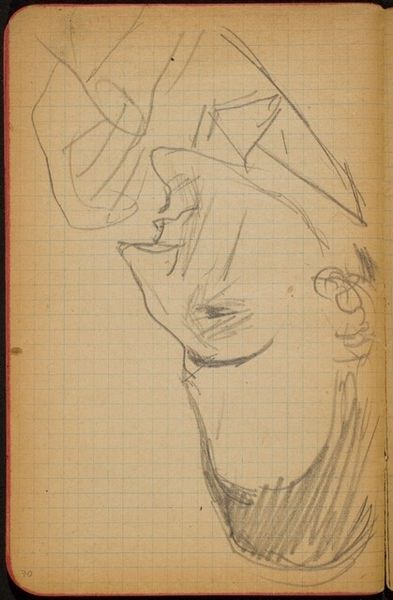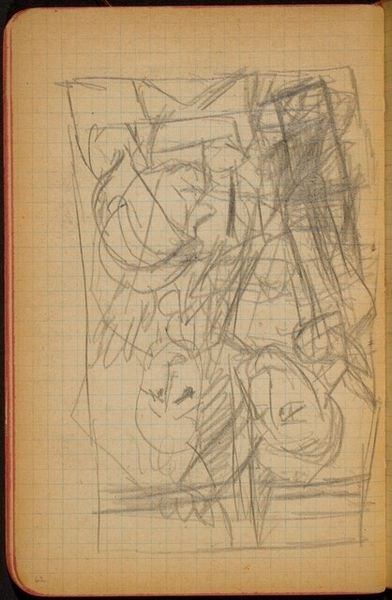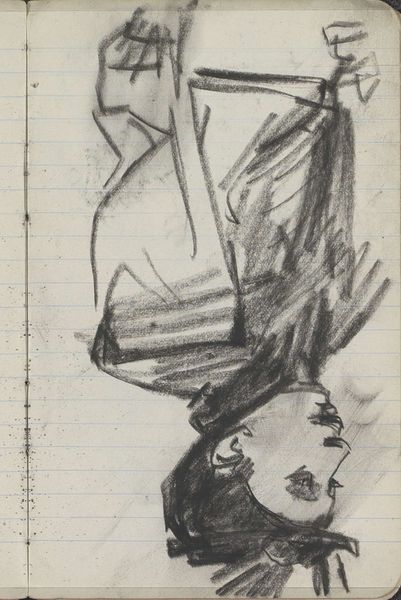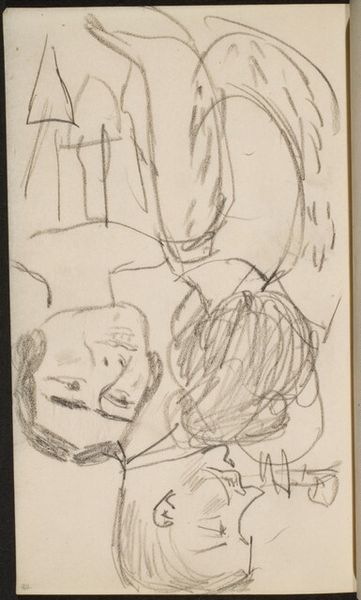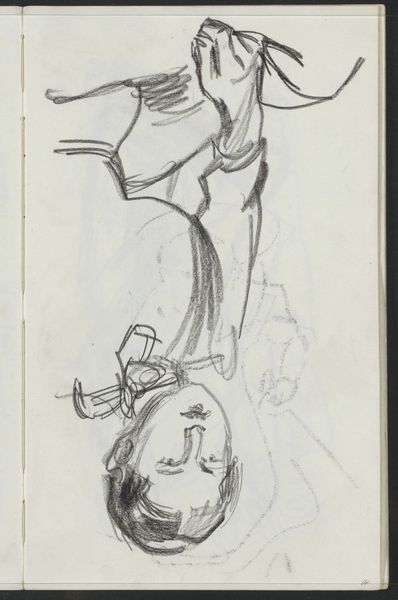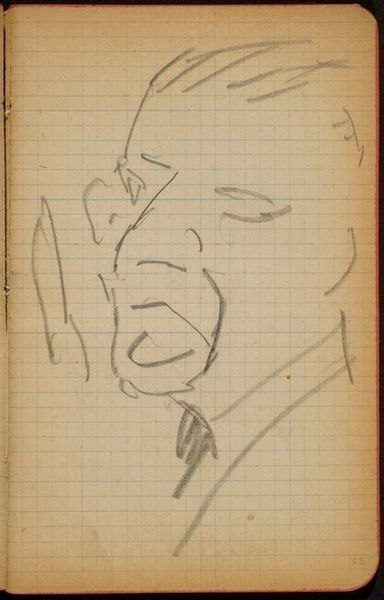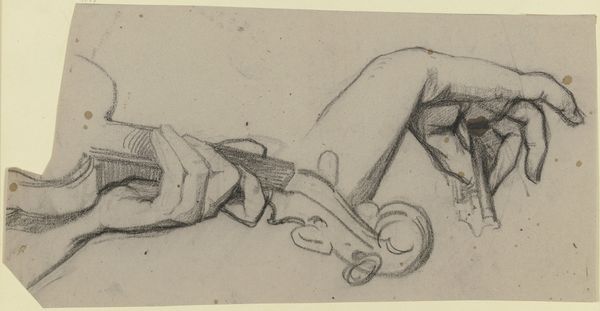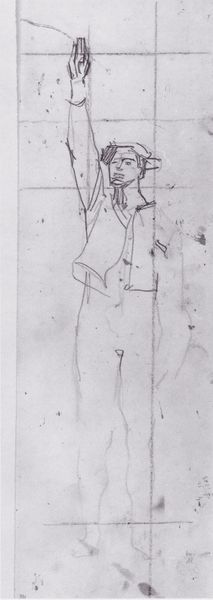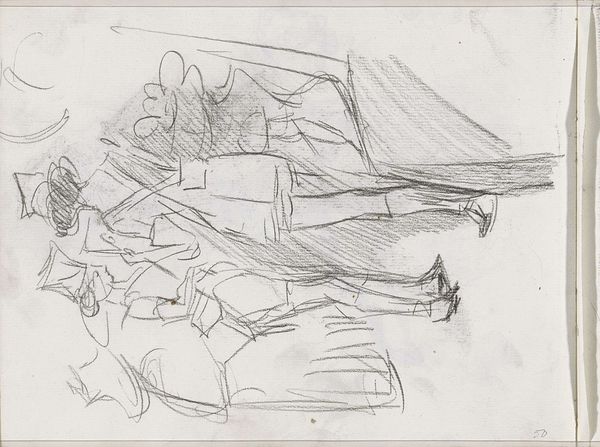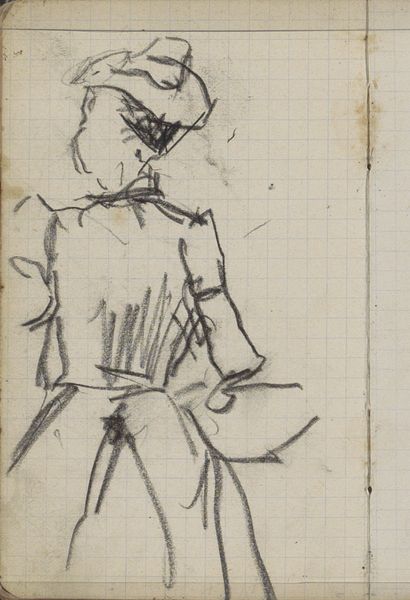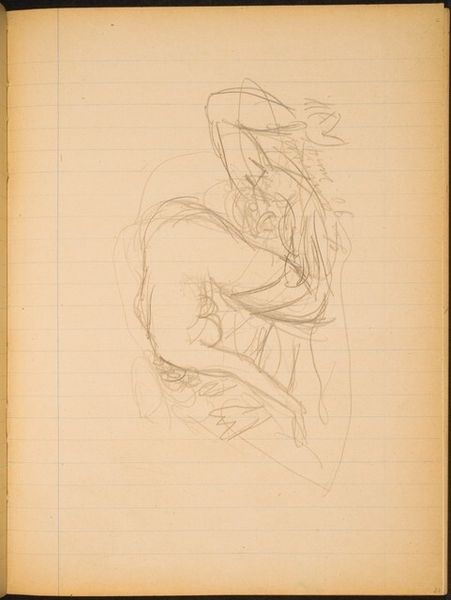![Zwei Figuren (Two Figures) [p. 50] by Max Beckmann](/_next/image?url=https%3A%2F%2Fd2w8kbdekdi1gv.cloudfront.net%2FeyJidWNrZXQiOiAiYXJ0ZXJhLWltYWdlcy1idWNrZXQiLCAia2V5IjogImFydHdvcmtzL2FkMjIyYjdjLTZkZGQtNDYzOS04MDI1LTM1YTQ1NTQ0OWJlYS9hZDIyMmI3Yy02ZGRkLTQ2MzktODAyNS0zNWE0NTU0NDliZWFfZnVsbC5qcGciLCAiZWRpdHMiOiB7InJlc2l6ZSI6IHsid2lkdGgiOiAxOTIwLCAiaGVpZ2h0IjogMTkyMCwgImZpdCI6ICJpbnNpZGUifX19&w=828&q=75)
drawing, paper, pencil
#
portrait
#
drawing
#
german-expressionism
#
figuration
#
paper
#
pencil
Dimensions: page size: 15.8 x 10.5 cm (6 1/4 x 4 1/8 in.)
Copyright: National Gallery of Art: CC0 1.0
Editor: So, here we have Max Beckmann's "Two Figures" from around 1918-1919, a drawing in pencil on paper. It looks like a page ripped from a sketchbook, capturing raw, expressive portraits. I am getting a feeling of urgency or unease from this work, given the scratchy lines and claustrophobic composition. How do you read this piece? Curator: Ah, yes. Beckmann! His work from this period always feels… haunted, doesn't it? Freshly returned from the Great War, one could expect he would make this image his most personal reflection, using that immediacy, as you said, "rawness", and transforming it into something almost feverish. Notice how he's employed very few refined details, preferring sharp, almost violent strokes, a common element in his work, wouldn't you agree? What emotions come through, to you, through that harshness? Editor: It's definitely unsettling. I see that intensity in the figure's wide, staring eye and how the face in the front is quite looming compared to the figure at the top. Is it me, or there’s a hint of dehumanization at play, perhaps a commentary on the impact of war? Curator: You've hit upon something key, there, my dear! Beckmann's not offering us pretty portraits here, is he? He wants to confront the viewer, disrupt their sense of normalcy. War *does* dehumanize. Do you think the rapid pace of this sketch alludes to trauma? I do. Editor: Yes, trauma absolutely! It feels like a fleeting memory he is struggling to record. I see so much torment and despair reflected back at me! It is quite different to what you might find at face value. Curator: Absolutely. Now imagine encountering this drawing alongside his paintings from the same period. The visual language—the tension, the angularity—echoes across mediums, offering a profound and disturbing window into Beckmann's inner world after the war. Art, truly, transformed in this moment of creation. Editor: I never looked at it like that. Thanks to your perspective, I feel I've discovered a hidden facet to Beckmann's visual language, almost like finding a lost word. Curator: The joy of understanding art lies in exchanging experiences, my dear. Let us keep unraveling these complexities together.
Comments
No comments
Be the first to comment and join the conversation on the ultimate creative platform.
